Your cat has started sneezing. Is it a harmless cold or a more serious cat flu? What are the symptoms of cat flu and how can it be treated?
Achoo! So, your cat has been sneezing a lot these days and now you’re wondering whether it’s just a regular cold or possibly an actual cat flu? But what exactly does the term “cat flu” imply? Does it mean your cat just has a runny nose for a while, or is it more serious? When we humans get a bad cold, it usually goes away all by itself after a few days, but is it the same for cats?
What are the symptoms you should look out for? And why is cat flu potentially dangerous for your cat if it’s not treated in time? Find out here:
What is cat flu?
Cat flu is a disease of the respiratory system. It usually affects the upper respiratory tract, but it can also have an impact on your cat’s eyes, nose, mouth and skin. Cat flu is contagious and the illness is passed from one cat to the next via smear infection (faecal-oral transmission) or droplet infection. In other words, when a sick cat coughs or sneezes, it spreads the pathogens to others. Sometimes direct body contact isn’t even necessary! In that case, it’s enough merely to come into contact with the pathogens (bacteria, viruses or parasites) through objects and/or in places where an infected cat has been. And don’t forget that cat-flu pathogens can also be brought indoors into the cat’s living area via a person’s clothes – without another cat ever entering the house!

Cat flu is an umbrella term

Cat flu is an umbrella term used to describe a whole group of contagious diseases involving the mucous membranes and respiratory tract. Each type of the disease comes with a variety of different symptoms and outward manifestations, and many different factors play a role in determining how bad a cat flu gets. In other words, depending on the type of pathogens and the state of your cat’s health to begin with, both the course and the symptoms of the illness can be quite different. While one cat might only feel slightly under the weather, another cat might become severely ill. In the worst case scenario, a cat might even die from the disease. Cat flu is not a trivial matter! It should always be taken very seriously!
Cat flu or a regular cat cold?

How can you tell if your cat has the flu or just a cold? If your kitty has caught a “regular” cold, they’ll likely have similar symptoms to us humans, like a runny nose and a lot of sneezing and coughing. It’s also normal for a cat with a cold to have a slight fever and maybe even swollen lymph nodes. These symptoms will cause your cats to feel listless and they’ll probably want to eat less and sleep (even) more. By the way: adult cats sleep 12 to 16 hours a day!

Cat flu can be dangerous

While the symptoms of a regular cat cold usually subside after a few days, an actual cat flu is potentially dangerous, in particular because the pathogens can permanently damage a cat’s body. If the flu becomes a chronic condition in a cat, it can cause the bones in their nasal cavity to lose their strength and sturdiness. It can also cause ulcers to form in the mouth and even damage the cat’s eyes. As a result, your cat might even lose its sight and end up blind. In other words, cat flu can be really dangerous, especially for kittens, older cats and unvaccinated animals.
Symptoms of cat flu
The symptoms of cat flu are multifaceted. The type of symptoms your cat has will depend on the particular pathogen that triggered the infection in the first place. There are three possible culprits for cat flu: bacteria (such as Bordetella and Chlamydia), viruses (such as Feline Calici or Herpes viruses) and parasites (such as Chlamydophila felis). If these microorganisms have entered your cat’s body and have not been fought off by its own immune system, they will attach themselves wherever they can and multiply. After some time, the following symptoms will appear:
- Discharge from the eyes
- Discharge from the nose
- Encrustation on the eyes
- Encrustation of the nose
- Ulcers in the mouth
- Inflammation of the conjunctiva (eyes)
- Frequent sneezing
- Increased coughing
- Difficulty swallowing
- Difficulty breathing
- Fever
- Tiredness
- Loss of appetite
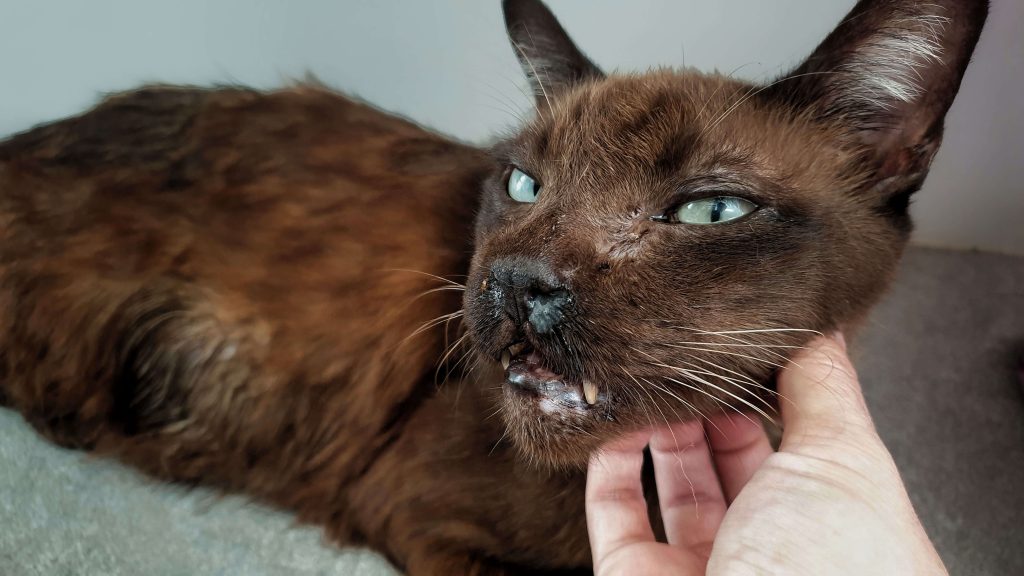
Treating cat flu
Cat flu should always be treated by a medical professional. Why? If cat flu is not treated properly, or if you treat it half-heartedly, it can become a chronic condition that results in permanent damage to your cat’s health and even death. Cats with cat flu might show only isolated symptoms, but even if it looks like they only have a few symptoms, they still might be infected – and infectious. Depending on how strong your cat’s immune system is, they might appear healthy even though they have the flu, which means they might infect other cats that don’t have such strong immune systems. Always be on the safe side and take your cat to a vet to make sure!
Visit your vet if you suspect cat flu

It could be that your cat has become infected? With cat cold always off to the vet! Better once too much, than not checked at all! A veterinarian can quickly check whether your kitty has cat flu and what kind of medication should be used in the therapy: Through the blood or the cell swab from the mucous membranes in the eyes, mouth or nose of your velvet paw, the suspicion can be confirmed quickly, and targeted action can be taken against the pathogens!
TIP: If you think your cat might have cat flu, please don’t wait too long: Have your cat examined and treated by a vet!
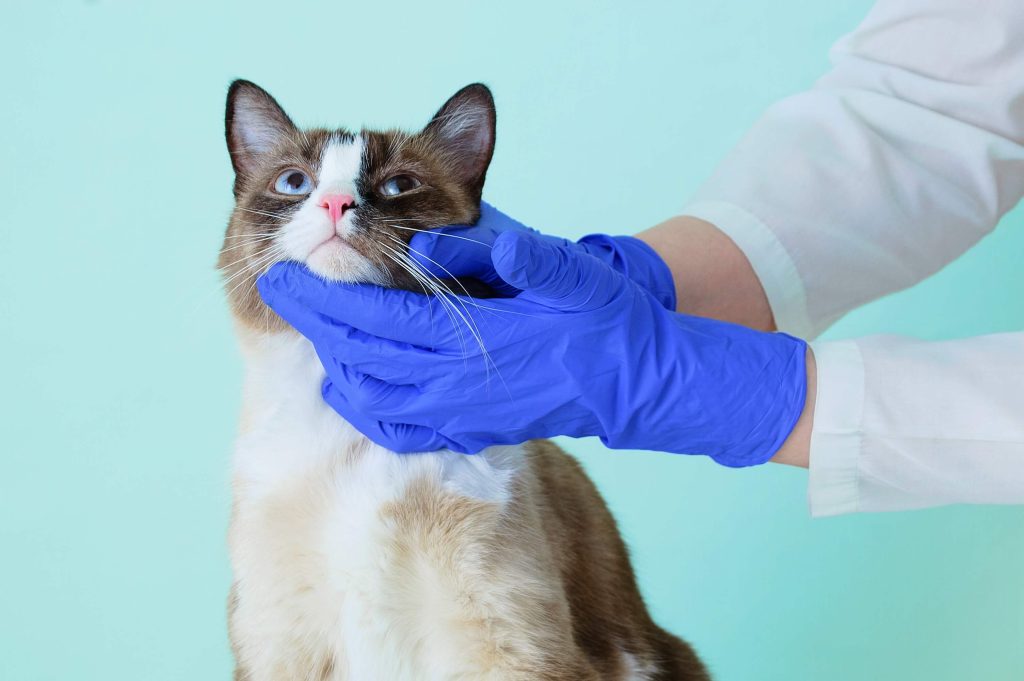

What kinds of treatment are used to alleviate cat flu? Different treatments are used depending on the pathogen that caused the flu in the first place. The symptoms of the disease can vary greatly, and there are often multiple symptoms at once, probably because there are multiple infections. For example, if the pathogens that caused the flu are bacterial in nature, then certain types of antibiotics can help. In the case of a viral infection, the best approach would be to try to boost the sick cat’s immune system. The types of medicine used to treat cats come in the following different forms:
- Drops
- Tablets
- Ointments
- Lotions
When you take your cat to the vet, you should discuss which type of treatment would be best and most comfortable for your particular furry friend. Always make sure you find the easiest and most effective way to get better – for both you and your cat!
Home remedies for cat flu – Should you try to treat your cat yourself?
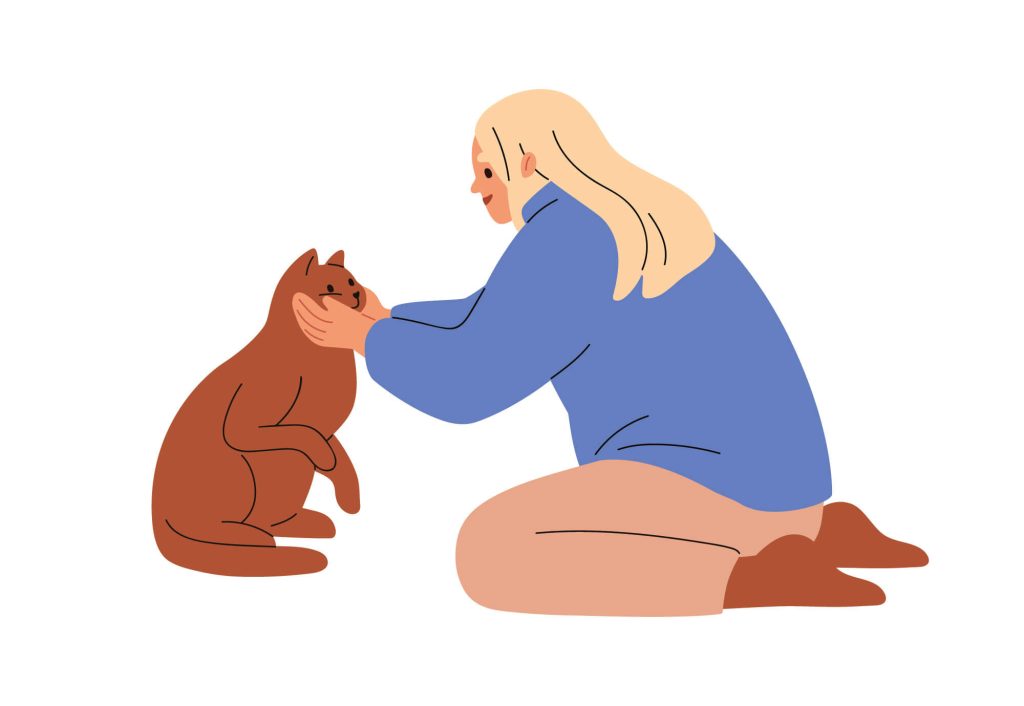
You should never try to treat cat flu yourself using home remedies! Still, it doesn’t mean you can’t help to alleviate your cat’s symptoms by cleaning their eyes and nose several times a day and carefully removing any crusty bits. This will help your cat breathe better. You should also make sure your cat has a warm and quiet place to sleep where they won’t be exposed to cold or drafts. If you have an outdoor cat that has cat flu, you should keep it indoors until it’s completely healthy again. You should also make sure your cat doesn’t have any contact to other animals while indoors. If your cat has problems chewing and swallowing, you can replace their usual food with wet food or food with a paste-like consistency; this will make it possible for your cat to swallow more easily, even if it has painful ulcers in its mouth or if its mouth is infected in some other way.
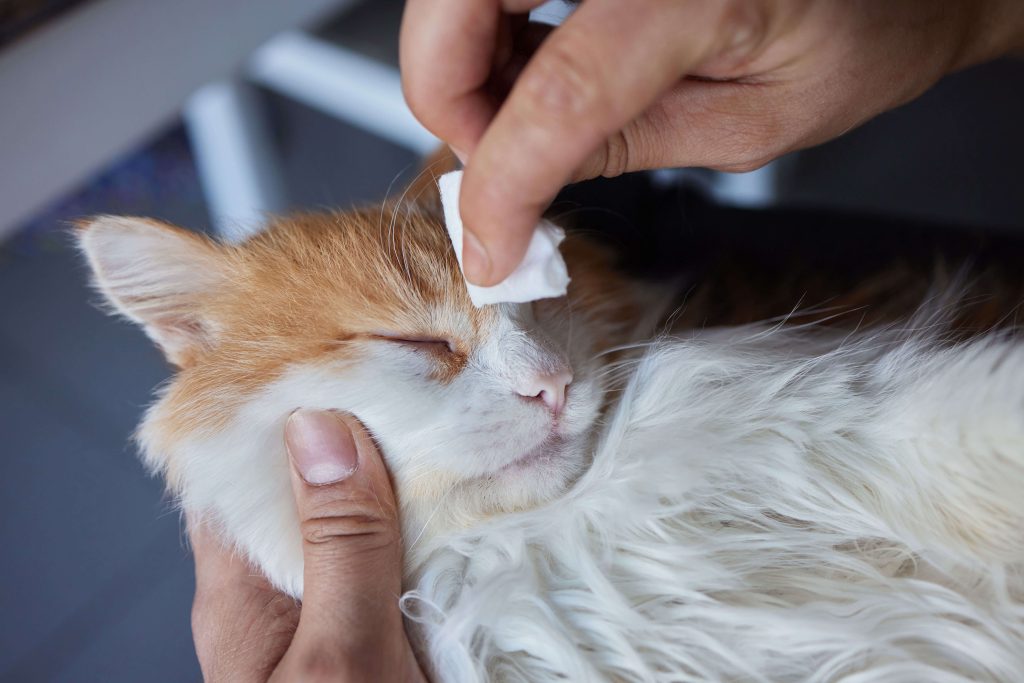
How much does it cost to treat cat flu?

The cost of treating cat flu will vary depending on the course of the illness and the type of treatment used, which itself depends on the original pathogen. If your cat is diagnosed with a serious disease, it can get expensive. When you have cat insurance, it can cover the cost of such things as examinations, diagnoses, treatments and medication. How much you end up paying depends on the particular plan you have with your insurance company. For this reason it’s always worthwhile to compare plans at various insurance companies!
How long does cat flu last?

How long cat flu lasts depends on the pathogen that caused it in the first place and how severe the illness is. If your adult cat has a mild case of cat flu with no major complications, the flu might be over after ten days. On the other hand, it can sometimes last for a good month. Cat flu can be quite dangerous in young cats: for example, if kittens become infected with cat flu in the first weeks of life, it can be life-threatening and even fatal for them.
Cat flu vaccine
Prevention is always preferable to treatment. This is why there’s a cat flu vaccine. It’s an integral part of the mandatory vaccine programme for outdoor cats, right along with shots for rabies, feline panleucopenia, Chlamydia, FeLV and FIP! The flu shot also makes sense for dyed-in-the-wool housecats, because they can become infected with viral pathogens brought into the home from outside by people or animals. You should always make sure your cat’s vaccines are up to date. What are the intervals at which your cat should be vaccinated? It depends on the vaccine originally given to your cat.
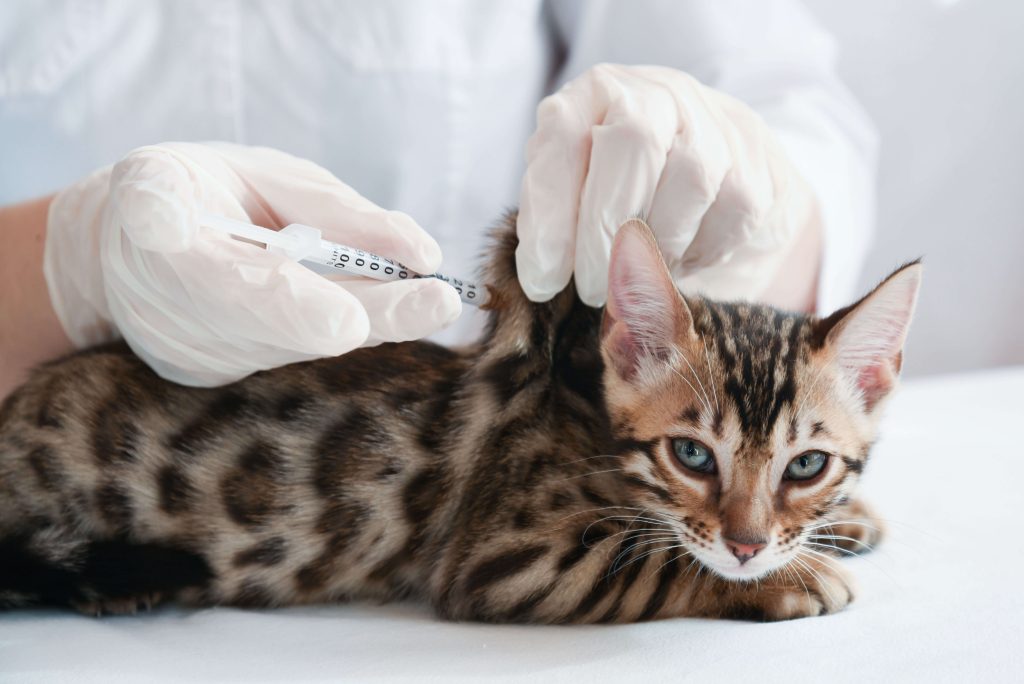
REMINDER: When you vaccinate your cat against cat flu, you’re not only protecting your own kitty, you’re also helping to prevent the disease spreading to other feline friends.
Vaccinate your cat when they’re still a kitten

Cat flu is much more dangerous for kittens than for adult cats, which means you should have your cat vaccinated when they’re still a kitten. If a mother cat has been vaccinated, her kittens will get enough antibodies via her milk and bloodstream to protect them from infection for the first few weeks. After that, however, you can help build their immune system by vaccinating them. Your cat will likely be given a combination-vaccine that protects them against other diseases at the same time.
How much does it cost to get your cat vaccinated?
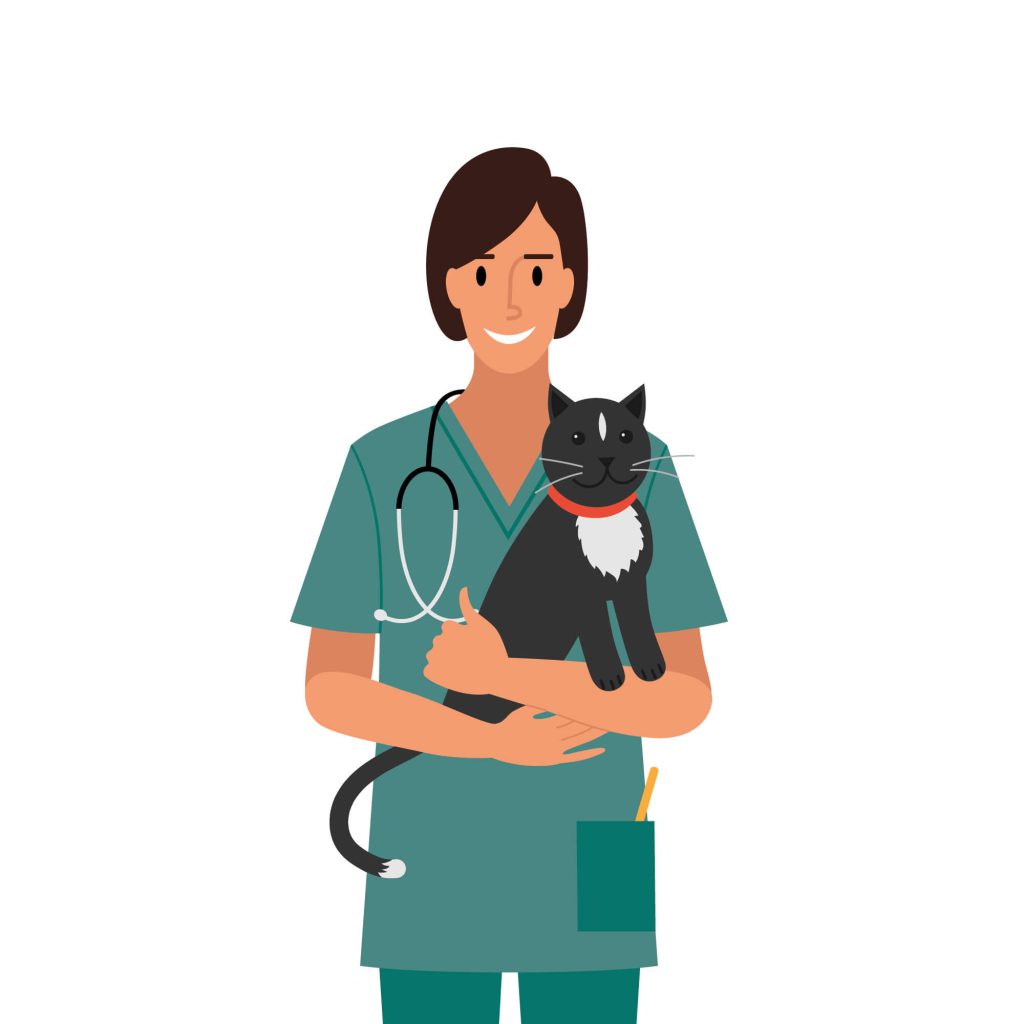
The cost of getting your cat vaccinated usually ranges between €20 and €40. These are not fixed prices, however. Veterinarians are bound by a fee schedule, but they can also charge at a single to triple rate. In other words, the cost of vaccinating your cat will vary depending on the veterinarian. It will also depend on whether you have an indoor or outdoor cat. If you have an exclusively indoor cat, only two doses of the vaccine are required. If you have an outdoor cat, it will take four vaccine doses to achieve immunisation.
Cat flu despite full vaccination: Is it possible?

Did your cat get cat flu even though it’s fully vaccinated against the illness? As you might already know, vaccination doesn’t offer 100% protection. Even fully vaccinated cats can become infected with pathogens and fall sick with the cat flu. The advantage they have over unvaccinated cats is that their immune systems will be armed and ready. If your cat has been vaccinated, it will have formed antibodies that will recognise the pathogens associated with cat flu and act in a targeted way to fight them off at an early stage. This will prevent severe cases of the flu, and when cats experience a mild course of the flu, it limits any subsequent damage.
Is cat flu contagious for humans?
Whether or not cat flu can be passed on to humans depends on the pathogens involved. If the infection is caused by a virus, humans usually won’t become infected. But it’s a different story when certain bacteria are involved. In this case, caution is required! When dealing with a sick cat, you should pay special attention to hygiene and refrain from having too close contact, just as a precaution. Children, in particular, should be kept out of direct physical contact with sick cats, just because their young immune systems aren’t sufficiently “trained” yet to resist a bacterial attack. So it’s best to stay at a distance!
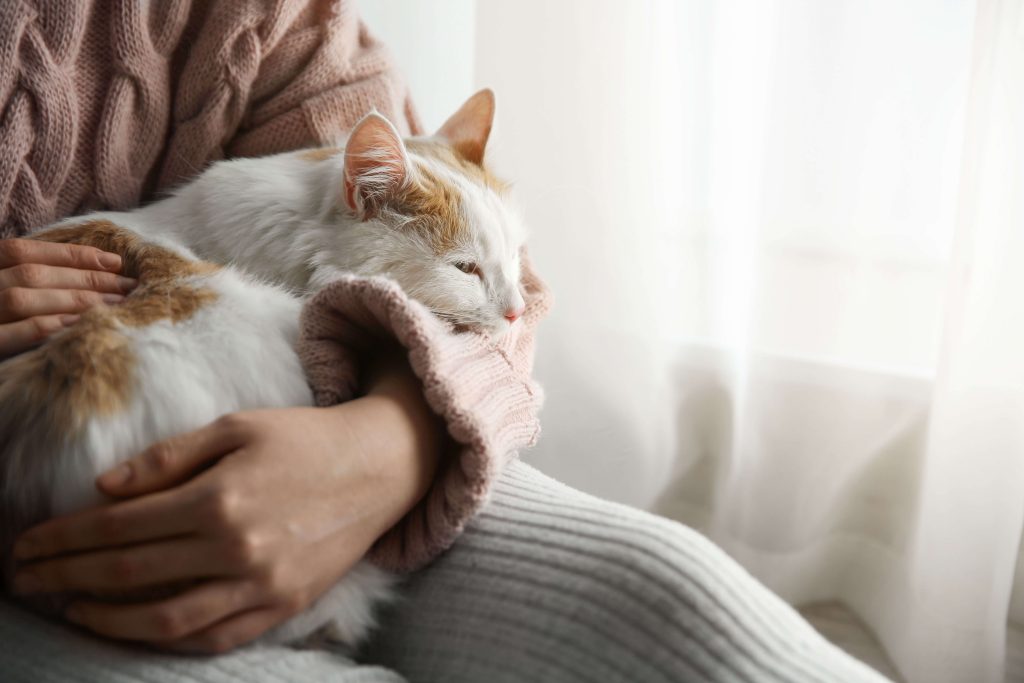
Frequently asked questions about cat flu
Cat flu is an umbrella term used to describe much more than just the sniffles or a cold. It refers to an entire group of contagious diseases involving a cat’s mucous membranes and upper respiratory tract, each with its own diverse symptoms and outward manifestations. The pathogens involved can be associated with bacteria (such as Bordetella and Chlamydia), viruses (such as Calici or Heropes viruses) and parasites (such as Chlamydophila felis).
If your cat has contracted a “normal” cold, it will probably have a runny nose and sneeze and cough a lot. But if your cat has contracted a case of cat flu, it’s often much more than just the cat’s nose that’s affected. Cat flu usually also impacts the mucous membranes in the mouth and around the eyes. Does your cat have the sniffles? It’s always better to be safe than sorry: take your cat to a vet to find out whether they have the flu or just a regular cold, and what kind of treatment would be best.
Cat flu is dangerous because the pathogens involved in causing the illness can also cause permanent damage to the cat’s body. If cat flu goes untreated, it can lead to long-term health consequences. For example, the sniffles (rhinitis) can become chronic, the bones in their nasal cavity can lose their strength and sturdiness, ulcers can form in the mouth and the cat’s eyes might be damaged, which could ultimately lead to them going blind.
Why is cat flu so dangerous? If cat flu isn’t treated properly and in time, it can lead to a chronic flu condition that might result in permanent damage to your cat’s health; sometimes it can even be fatal! Cats with cat flu often show only isolated symptoms, but even if it looks like they only have a few symptoms, they still might be infected – and infectious. Depending on how strong your cat’s immune system is, they might appear healthy even though they have the flu, which means they might infect other cats.
Can my cat die from cat flu? If your cat has cat flu and you don’t take it to the vet in time, it’s possible your furry friend will have to pay for your hesitation with its life. Cat flu is especially dangerous for young kittens: If kittens get infected in the first weeks of their life, cat flu can be life-threatening and even fatal for them.
The symptoms of cat flu are multifaceted depending on the particular pathogen that triggered the infection in the first place. There are three possible triggers for cat flu: bacteria, viruses and parasites. If the cat’s immune system is not able to fight off these pathogens, the result will be various symptoms involving the mucous membranes and upper respiratory tract in and around your cat’s head.
The extent to which cat flu manifests itself in a cat depends on how active the cat’s defence system is. The pathogen that triggered the illness in the first place will also determine whether the cat has a watery or purulent discharge from the eyes and nose. It will also determine the full extent of the infection in the eyes (conjunctiva) and throat, and whether the cat has an elevated temperature or not. Feline patients usually feel very listless and have less appetite than usual. In severe cases, cats might also occasionally experience difficulty breathing and swallowing.
Cat flu can usually be cured if it’s diagnosed and treated in time. This means that if your cat shows symptoms, you should see your vet right away and not hesitate or delay too long! The vet will examine your cat, make sure it really has cat flu and then, if the diagnosis is confirmed, treat your cat with the appropriate medication. This is the best way for your feline friend to recover and be symptom-free as soon as possible.
You should never try to treat cat flu yourself, because the very first step in treatment is to identify the pathogens that caused the illness in the first place. Only a professional can do this, and only a professional can recommend the appropriate treatment afterwards. Different pathogens and infections will require different medications. For example, it the pathogens are bacterial in nature, certain antibiotics can help. In the case of a viral infection, the treatment involves boosting your feline friend’s immune system.
The time it takes for your cat to recover from cat flu depends on the pathogen that caused it and the constitution of your cat. An adult cat without any serious pre-existing conditions can recover from cat flu in as little as a week. Older cats, very young cats and cats with weakened immune systems will have a tougher time recovering, because they won’t be able to fight off the pathogens as easily. In that case, it can take up to a month.
What will vets do when you show up with a cat suspected of having cat flu? A veterinarian will be able to quickly determine whether your kitty has cat flu or not and what kind of medication should be used to treat it. They will likely take a blood sample or cell swab from the mucous membranes in your cat’s eyes, mouth or nose to quickly confirm the diagnosis and take targeted action against the pathogens!
How much does it cost to have a cat treated for cat flu? The cost of treating a cat with cat flu varies. It depends on how bad the illness is and on the type of treatment necessary to defeat a particular pathogen. You will have to pay for examinations, diagnosis, treatment and medication. Even though there is usually some kind of nationwide fee schedule, veterinarians are nevertheless allowed to bill at different rates, which means the treatment costs can vary significantly.
Is it possible to prevent cat flu and protect your cat by means of vaccination? Yes, there is a vaccine for cat flu! This basic immunisation is especially important for outdoor cats. But the vaccination is also useful for house cats, because even though they don’t go outside, they can still get infected if the pathogens are somehow brought into their living area via people or other animals. You should make sure to stay up-to-date with vaccines at all times.
Vaccination doesn’t provide 100% protection against cat flu. Even fully vaccinated cats can become infected under certain circumstances and end up getting cat flu. But if your cat is vaccinated, their immune systems will be armed and ready. They will have formed antibodies that recognise the pathogens associated with cat flu and act in a targeted way to fight them off at an early stage. This will prevent your cat from having a more severe case of cat flu. And when cats experience only a mild course of cat flu, it limits any subsequent damage.
The cost of getting your cat vaccinated will range between €20 to €40 euros on average. Veterinarians are bound by a fee schedule, but they can still charge at a single to triple rate. This means that the cost of vaccinating your cat will vary depending on the vet. It also depends on whether you have an indoor or outdoor cat. If you have an exclusively indoor cat, only two doses of the vaccine are required to achieve immunisation. If you have an outdoor cat, it will take four doses to achieve the same.
Whether or not cat flu can be passed on to humans depends on the pathogens involved. If the infection is caused by a virus, humans usually won’t become infected. But the situation is different when certain bacteria are involved. In this case, caution is required, and you should pay attention to hygiene and refrain from having too close contact with the sick cat. Children, in particular, should not have any physical contact with a sick cat, because their immune systems are not sufficiently “trained” yet.
If the pathogen that caused the cat flu in the first place is a virus, it’s usually not transmissible to humans. But cat flu can be transmitted to other animals in the household in the form of a viral pathogen. This can happen via droplet transmission and is hard to avoid if the animals are close to each other. Your sick cat can also spread the pathogens at lightning speed via the saliva it uses to groom itself as well as by sneezing and coughing.
For humans, cat flu is only dangerous if a certain type of bacterial pathogen is involved. For example, the bacterium known as “Bordetella bronchiseptica” is a pathogen that can also cause respiratory illness in humans. Please note, however, that it mainly affects adults with weakened immune systems and young children whose immune defences have had too little experience with such pathogens.
